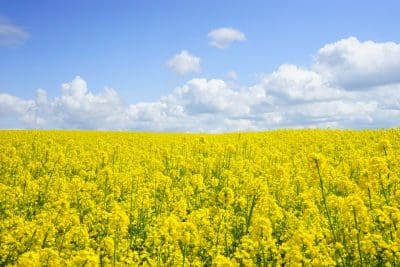THE area planted to canola is likely to dip from the 2017 level if general planting rain for the upcoming winter crop falls later than mid May.

WA growers can now access GM crops approved by the Gene Technology Regulator without the need for an exemption order.
Trader sources have said while canola was a staple in many rotations, it was up against a steady to higher price outlook on all major commodities in the cropping mix as growers and agronomists started to crunch numbers on crops to grow in 2018.
While canola prices were under pressure during the 2017 harvest, when yields in many growing regions came in above expectations, traders said a well-advanced and EU-focused export program had run down unpriced reserves of current crop to take off supply-side pressure.
“With conditions here in eastern states remaining dry, we’ve hit a short-term bottom, and international prices are moving in the right direction,” Pinnacle Commodities broker, Rod Buckle, said.
Mr Buckle said positive offshore leads for new-crop Australian canola prices had been dryness in South America, which had strengthened bids in soybean and soymeal markets, as well as ongoing European demand.
Chickpea appeal
Agronomically and economically, Mr Buckle said other crops were looking just as attractive to growers as canola.
“In terms of grower intentions, the planting window for canola closes earlier than for the other major winter crops, and it’s not looking like a larger-than-average plant, that’s for sure.
“March and April are the critical time for that early rain to plant canola on, and if it’s late, we could certainly see more chickpeas too.
“Chickpeas have shown themselves to be quite resilient, and people are looking to plant them again if the crop performed well for them last year.”
Strength in cereals
ADM accumulation manager for southern NSW and Central Queensland, Michael Vaughan, said forward values for 2018 canola at around $520 per tonne delivered to Port Kembla, Melbourne and Geelong were available at present, but were not enough to induce grower selling.
“Large-scale farmers will forward price a proportion of their crop but the smaller growers won’t rush into it, and some people might be targeting more like $550/t port,” Mr Vaughan said.
“Last year we saw a big increase in canola at the cost of barley hectares, but barley has been one of the best gross margins across central and southern NSW.”
Wheat prices have also bounced from their 2017 harvest levels, with new-crop now bid at $290/t for Australian Premium White (APW) multigrade into southern ports, and $10/t more in Brisbane and Newcastle.
“Based on that, and barley prices being strong, as well as a lot of farmers being committed to a pulse in their rotation, I can see canola area being unchanged to slightly lower.”
Igrain broker, Duncan Whittle, said the ratio of returns for cereals over canola had improved significantly since the 2017 harvest.
“Based on that, you wouldn’t be increasing your area of canola.”
Mr Whittle said a 30-year low in global barley stocks was supporting the feedgrain’s value, and would encourage a larger area in the 2018 winter-cropping program.
Pulses popular
NSW Department of Primary Industries plant pathologist, Kurt Lindbeck, said the area sown to canola was likely to be maintained, especially if rain allowed planting to get off to an early start in March.
“We would have to see the break be dramatically late for a drop in canola area,” Dr Lindbeck said.
He said the NSW DPI was fielding a lot of inquiry about chickpea and lentil production.
“It looks like we’ll be seeing increases there.”
And while plenty of long-time chickpea growers in Queensland and northern NSW are smarting over chickpea prices being $600/t instead of above $1000/t, as they were in the bumper 2016 harvest, Dr Lindbeck said current chickpea prices stacked up well against other key winter crops.
“If you’re a first-time chickpea producer in southern NSW, you may never have seen an $1100/t price, so $600/t is very attractive.”
Dr Lindbeck said chickpeas had the potential to displace some canola area, but lupin and field pea plantings were likely to be the main crops which ceded hectares to chickpeas.
“A lot of growers are finding the canola/wheat rotations they’ve been running for seven or eight years are very nitrogen hungry, and putting a pulse in after wheat will reduce that need for nitrogen.”
Dr Lindbeck said growers new to chickpeas needed to introduce rhizobium to the soil to maximise the crop’s ability to produce nodules of nitrogen on its roots.

HAVE YOUR SAY